Abstract
Measurements made from carotid pulse tracings and phonocardiograms are helpful in the prediction of severe aortic stenosis in young patients. In the elderly, however, analysis of the carotid pulse tracing and, in particular, its maximum rate of rise has proved unreliable because the range of normal values for this age group has not been established. Consequently, we studied 44 young normal and 44 older normal subjects, 15 older patients with systolic hypertension, and 36 older patients with significant aortic stenosis. Measurements obtained from the carotid pulse included the left ventricular ejection time, upstroke time, half-rise time, and the maximum rate of rise. The peak of the systolic murmur in aortic stenosis was measured phonocardiographically from the Q wave of the simultaneously recorded electrocardiogram (QP interval). The results confirm that the maximum rate of rise of the carotid pulse of normal older subjects is much more rapid than that of young subjects. Among elderly patients with aortic stenosis, the maximum rate of rise falls within the range of the normal young. Measurement of the half-rise time is imprecise, and there is considerable overlap with the normal. This is also true of left ventricular ejection time. The upstroke time is unreliable because of wave distortion produced by the arteriosclerotic vascular bed. The two most valuable and easily recorded measurements are the maximum rate of rise and the QP interval. A maximum rate of rise of more than 1000 mmHg/s and a QP interval of less than 220 ms argue strongly against the diagnosis of severe aortic stenosis. These measurements provide a simple, non-invasive means of avoiding left heart catheterisation in older subjects suspected of having severe aortic stenosis.
Full text
PDF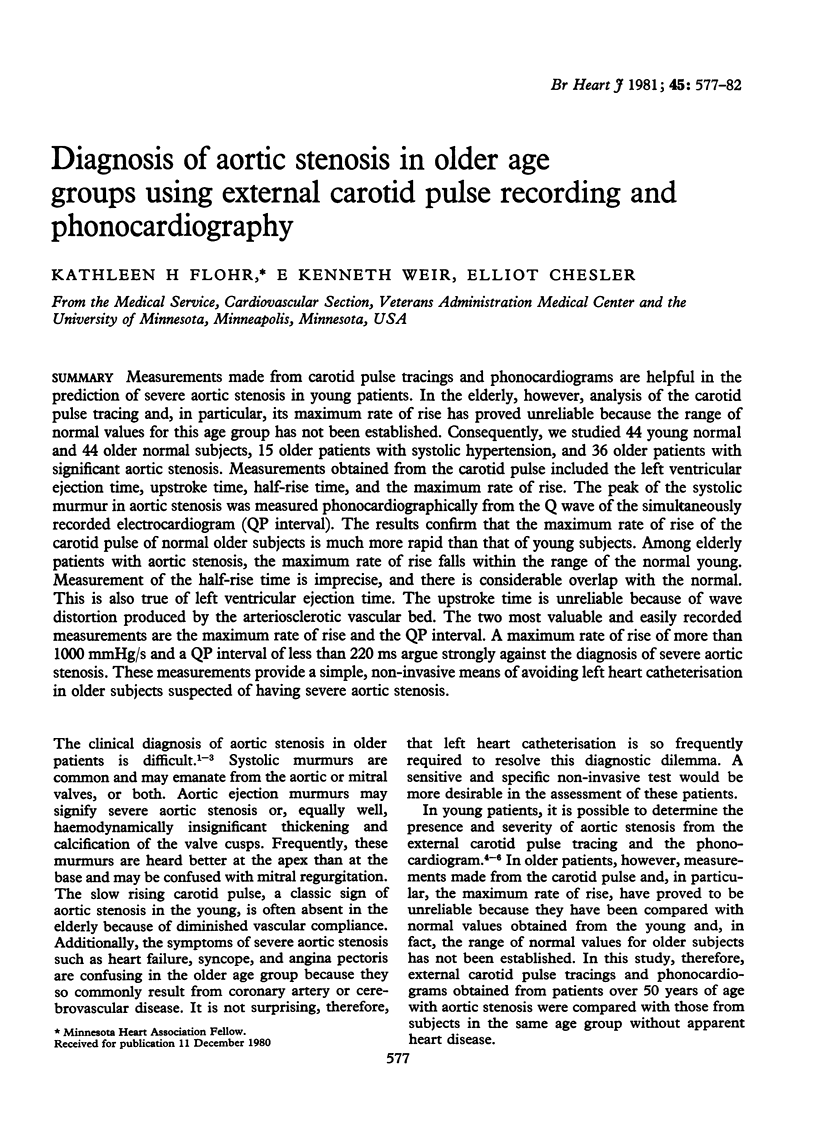
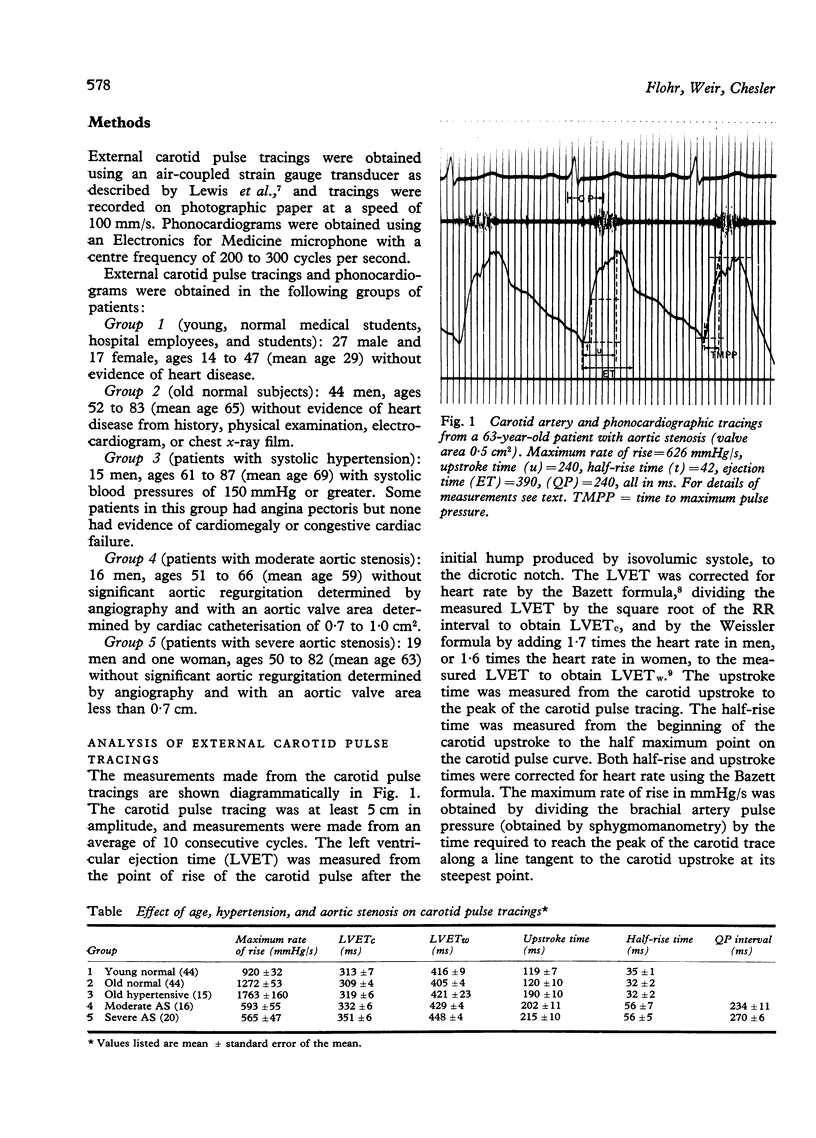
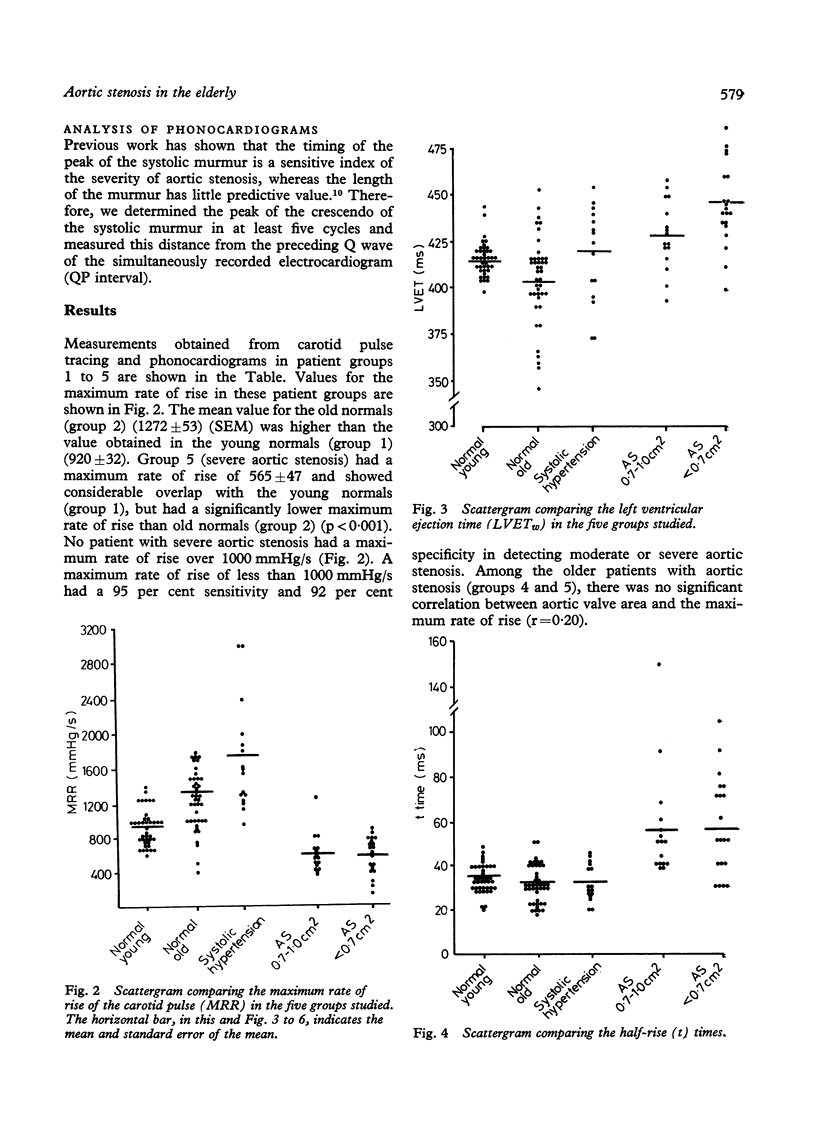
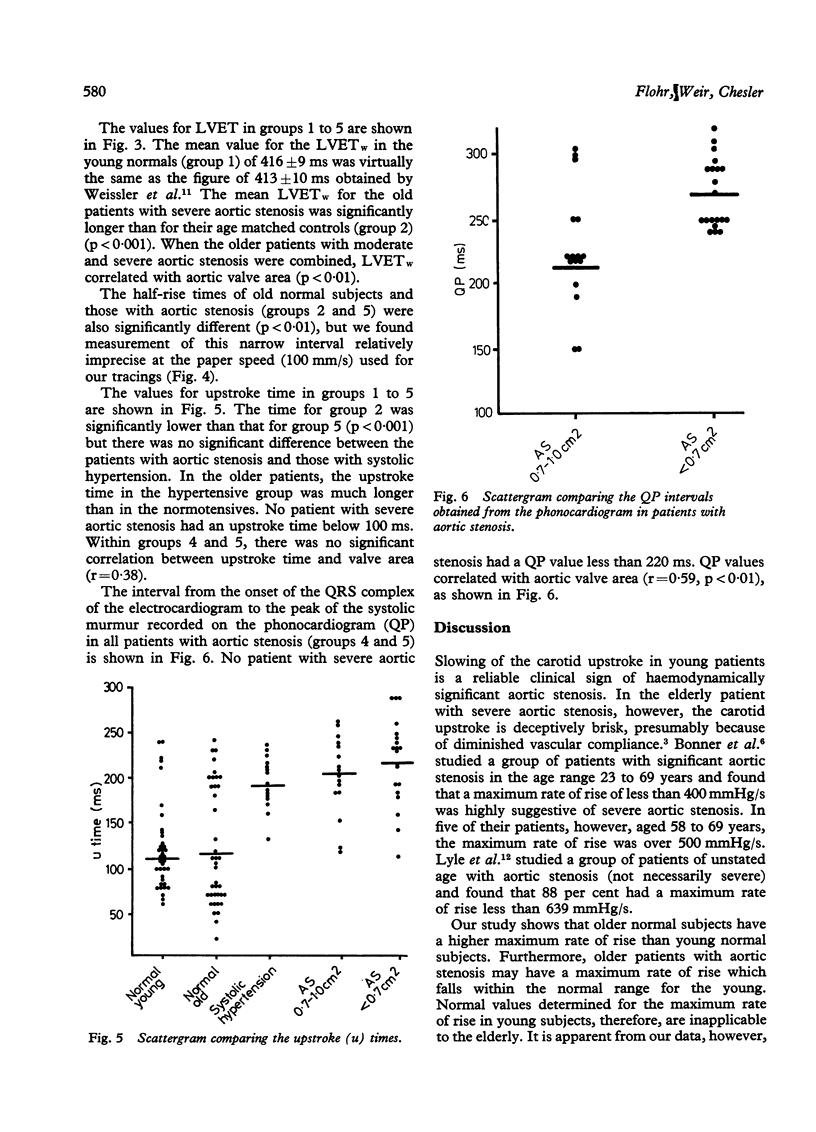
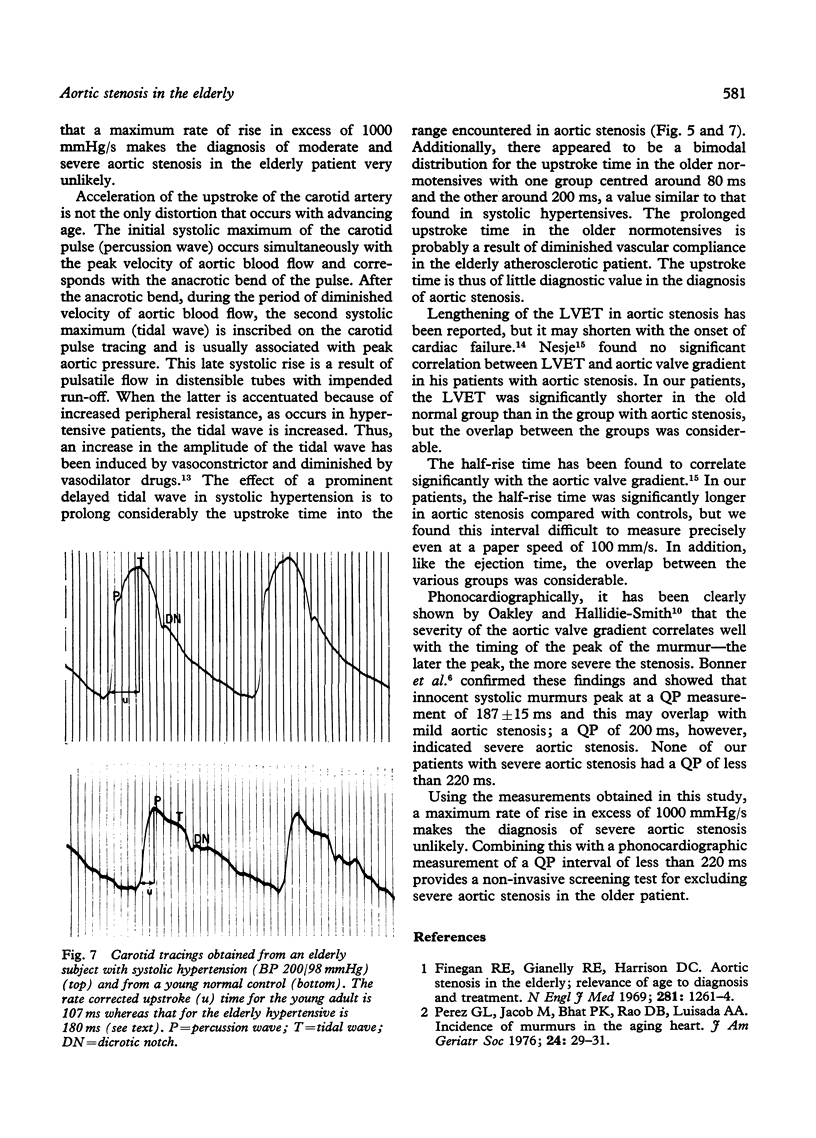
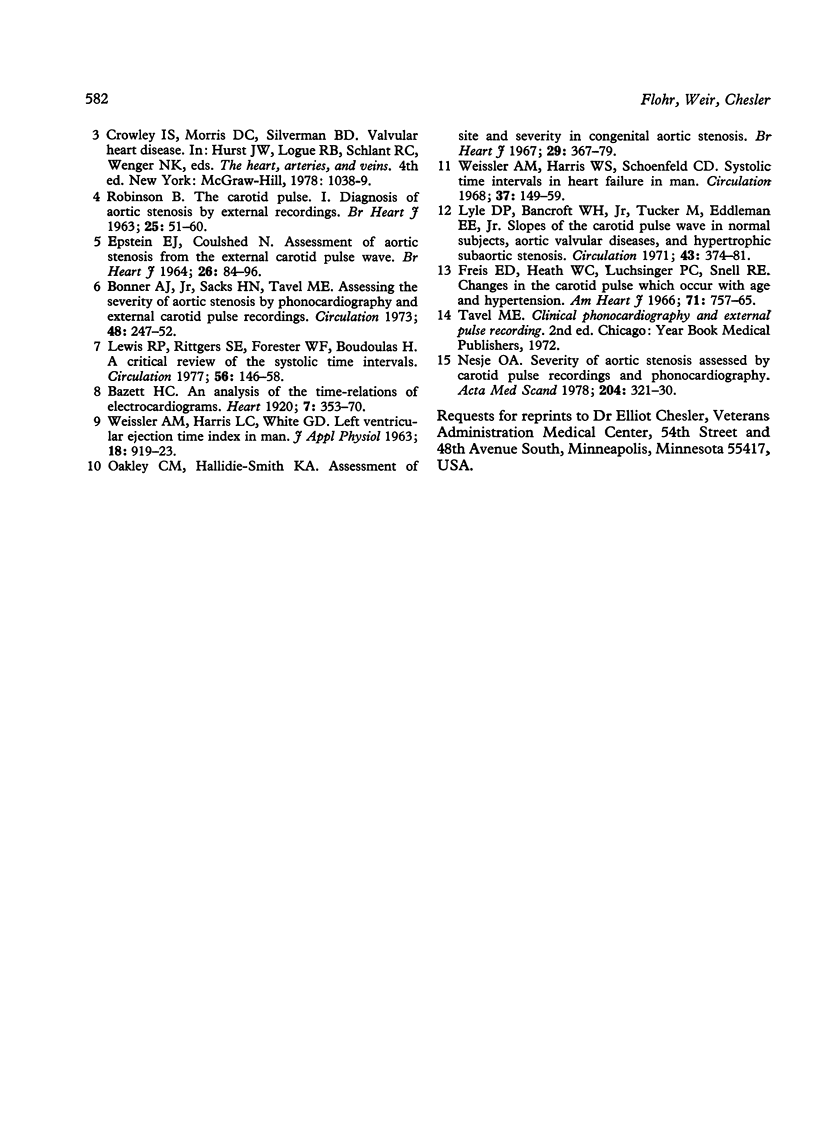
Selected References
These references are in PubMed. This may not be the complete list of references from this article.
- Bonner A. J., Jr, Sacks H. N., Tavel M. E. Assessing the severity of aortic stenosis by phonocardiography and external carotid pulse recordings. Circulation. 1973 Aug;48(2):247–252. doi: 10.1161/01.cir.48.2.247. [DOI] [PubMed] [Google Scholar]
- EPSTEIN E. J., COULSHED N. ASSESSMENT OF AORTIC STENOSIS FROM THE EXTERNAL CAROTID PULSE WAVE. Br Heart J. 1964 Jan;26:84–96. doi: 10.1136/hrt.26.1.84. [DOI] [PMC free article] [PubMed] [Google Scholar]
- Finegan R. E., Gianelly R. E., Harrison D. C. Aortic stenosis in the elderly. Relevance of age to diagnosis and treatment. N Engl J Med. 1969 Dec 4;281(23):1261–1264. doi: 10.1056/NEJM196912042812302. [DOI] [PubMed] [Google Scholar]
- Freis E. D., Heath W. C., Luchsinger P. C., Snell R. E. Changes in the carotid pulse which occur with age and hypertension. Am Heart J. 1966 Jun;71(6):757–765. doi: 10.1016/0002-8703(66)90596-5. [DOI] [PubMed] [Google Scholar]
- Lewis R. P., Rittogers S. E., Froester W. F., Boudoulas H. A critical review of the systolic time intervals. Circulation. 1977 Aug;56(2):146–158. doi: 10.1161/01.cir.56.2.146. [DOI] [PubMed] [Google Scholar]
- Lyle D. P., Bancroft W. H., Jr, Tucker M., Eddleman E. E., Jr Slopes of the carotid pulse wave in normal subjects, aortic valvular diseases, and hypertrophic subaortic stenosis. Circulation. 1971 Mar;43(3):374–381. doi: 10.1161/01.cir.43.3.374. [DOI] [PubMed] [Google Scholar]
- Nesje O. A. Severity of aortic stenosis assessed by carotid pulse recordings and phonocardiography. Acta Med Scand. 1978;204(4):321–330. doi: 10.1111/j.0954-6820.1978.tb08447.x. [DOI] [PubMed] [Google Scholar]
- Oakley C. M., Hallidie-Smith K. A. Assessment of site and severity in congenital aortic stenosis. Br Heart J. 1967 May;29(3):367–379. doi: 10.1136/hrt.29.3.367. [DOI] [PMC free article] [PubMed] [Google Scholar]
- Perez G. L., Jacob M., Bhat P. K., Rao D. B., Luisada A. A. Incidence of murmurs in the aging heart. J Am Geriatr Soc. 1976 Jan;24(1):29–31. doi: 10.1111/j.1532-5415.1976.tb03250.x. [DOI] [PubMed] [Google Scholar]
- ROBINSON B. The carotid pulse. I. Diagnosis of aortic stenosis by external recordings. Br Heart J. 1963 Jan;25:51–60. doi: 10.1136/hrt.25.1.51. [DOI] [PMC free article] [PubMed] [Google Scholar]
- WEISSLER A. M., HARRIS L. C., WHITE G. D. LEFT VENTRICULAR EJECTION TIME INDEX IN MAN. J Appl Physiol. 1963 Sep;18:919–923. doi: 10.1152/jappl.1963.18.5.919. [DOI] [PubMed] [Google Scholar]
- Weissler A. M., Harris W. S., Schoenfeld C. D. Systolic time intervals in heart failure in man. Circulation. 1968 Feb;37(2):149–159. doi: 10.1161/01.cir.37.2.149. [DOI] [PubMed] [Google Scholar]


